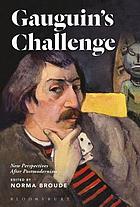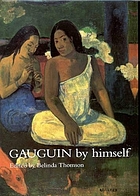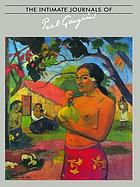 Gaugin's challenge : new perspectives after postmodernism
by
Norma Broude
Gaugin's challenge : new perspectives after postmodernism
by
Norma Broude
 Gauguin by himself
by
Paul Gauguin 1848-1903.Belinda Thomson
Gauguin by himself
by
Paul Gauguin 1848-1903.Belinda Thomson
 The intimate journals of Paul Gauguin
by
Paul Gauguin 1848-1903.
The intimate journals of Paul Gauguin
by
Paul Gauguin 1848-1903.
